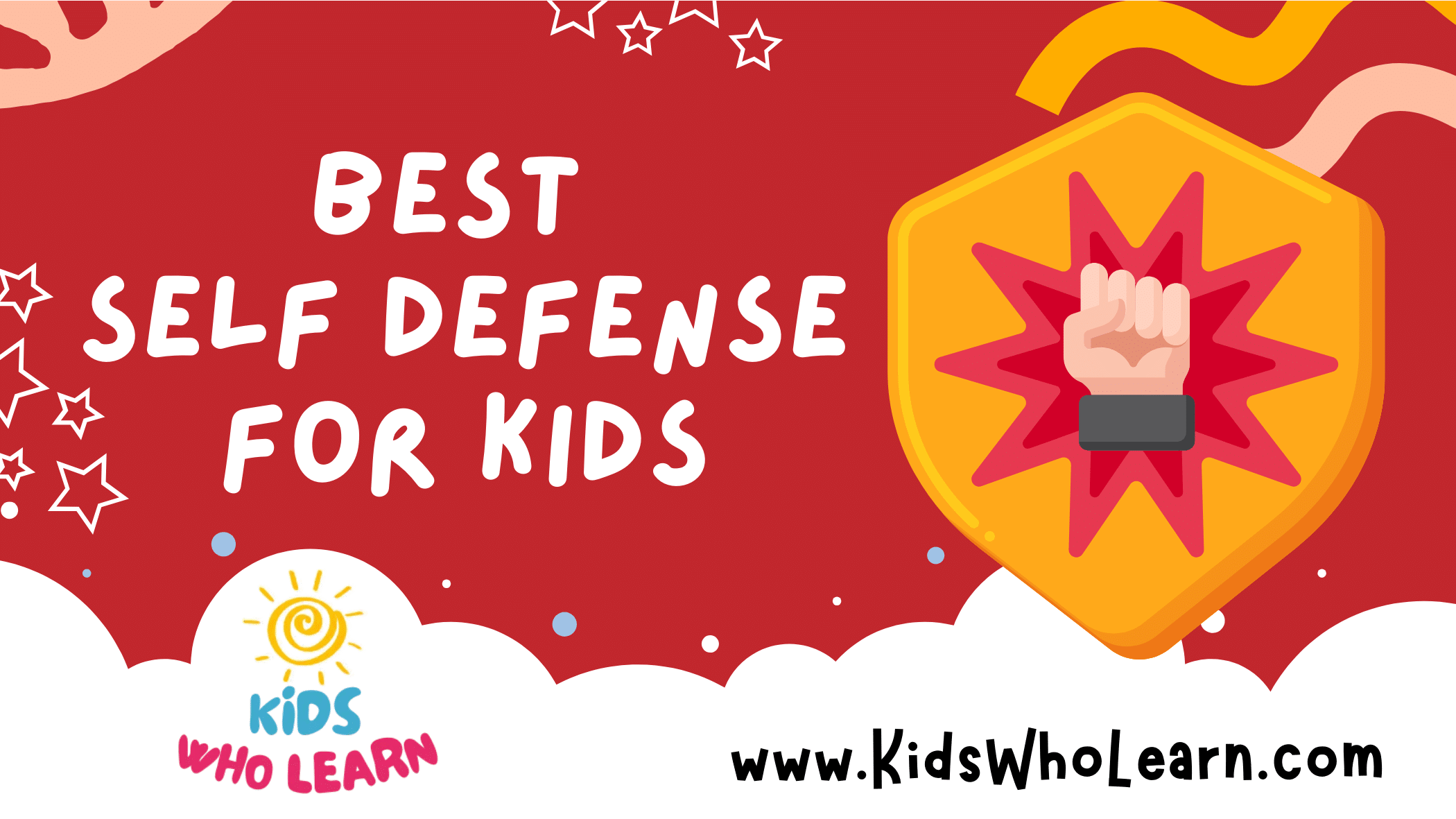Learning self-defense equips children with a vital set of skills that go beyond physical techniques; it fosters confidence and awareness, both crucial for personal safety. It’s not only about the ability to ward off an attacker but also about developing the acuity to avoid hazardous situations altogether. Early training in self-defense can instill a sense of security and empowerment, allowing kids to navigate their environments more safely and assuredly.
Selecting the appropriate self-defense style for a child is imperative, taking into account factors such as the child’s age, interests, and physical capabilities. Some martial arts like judo and taekwondo are popular choices, focusing on discipline and respect as well as physical defense. Moreover, ongoing practice is essential in self-defense to ensure that kids can recall and execute techniques effectively if the need arises. It’s about striking a balance between learning serious self-protective strategies and engaging in an activity that enhances overall well-being.
Key Takeaways
- Self-defense training is as much about building confidence and situational awareness as it is about physical defense.
- Choosing the right self-defense style should align with a child’s age and personal interests for optimal engagement and effectiveness.
- Consistent practice is key to ensuring self-defense techniques become well-ingrained responses for children.
The Importance of Self-Defense for Kids
Teaching kids self-defense equips them with skills to handle bullying, resist abuse, prevent abduction, and increases their confidence and self-discipline.
Understanding Bullying and Abuse
Bullying: It’s a prevalent issue in schools and online environments. By learning self-defense, kids gain the ability to protect themselves against bullies and mitigate the psychological impact of bullying by fostering a sense of empowerment.
- Abuse: Establishing boundaries through self-defense training helps kids recognize and resist different forms of abuse.
Child Abduction and Stranger Danger
- Stranger Danger: Kids often lack the experience to judge a stranger’s intentions. Self-defense education is critical for them to identify potential dangers and act swiftly.
| Strategy | Description |
|---|---|
| Yell & Run | Train kids to yell loudly and run to a safe place. |
| Trust Intuition | Encourage kids to trust their gut feeling about a person or situation. |
| Seek Help | Teach them to find a trustworthy adult at signs of danger. |
- Child Abduction: Self-defense can provide escape techniques that could prevent an abduction.
Building Confidence and Discipline
Self-defense classes contribute to:
- Confidence: Kids who know how to defend themselves tend to carry themselves with more assurance in everyday life, reducing their chances of becoming targets.
- Self-Discipline: They learn the value of practice, patience, and perseverance, improving their focus and area discipline.
Promoting Safety and Awareness
- Safety: Training kids in self-defense underlines the importance of safety in both familiar and unfamiliar settings.
- Awareness: A key component of self-defense is situational awareness, which teaches kids to be observant and make smart decisions.
- Common Sense: It equips them with common-sense tactics that can deter or avoid potentially dangerous situations.
Selecting the Right Self-Defense Style
When choosing a self-defense style for children, it’s important to consider the physical and psychological development stage of the child, as well as the objective of the training – whether it’s discipline, confidence-building, practical self-defense, or a combination of these.
Martial Arts for Foundation
Martial arts like karate, judo, and taekwondo are excellent foundational styles. They emphasize discipline, respect, and are appropriate for most age groups. For example, karate provides striking techniques, while judo focuses on throws and grappling, which can help with fall prevention.
Reality-Based Self-Defense
Krav Maga, taught by organizations such as Krav Maga Worldwide, is a reality-based self-defense system. It’s practical and straightforward, encompassing techniques that can be effective in real-world scenarios. However, it is typically more suitable for adolescents due to its intense nature.
Combative Sports as an Option
Combative sports like Mixed Martial Arts (MMA) and Brazilian Jiu-Jitsu offer comprehensive skill sets that include striking and grappling. MMA can be a good option for older children, especially boys interested in a variety of techniques. Meanwhile, Brazilian Jiu-Jitsu emphasizes ground fighting, which can be advantageous for smaller defenders.
Age Appropriate Practices
Ensure that the selected self-defense method is age appropriate. Younger children, sometimes considered as “too young,” are not physically or emotionally prepared for intense or competitive fighting styles. Starting with non-contact forms of martial arts is advisable until they reach an age where contact sports are safe and beneficial.
Self-Defense for Girls and Boys
It’s important to teach both girls and boys effective physical self-defense methods. This training can empower girls with the confidence to protect themselves and educate boys on respectful strength. Tailor the approach to individual needs, ensuring that everyone gets the most out of their self-defense education.
Essential Self-Defense Techniques
Equipping children with essential self-defense techniques empowers them to defend themselves effectively in various situations. This section outlines practical offensive and defensive skills, the importance of environmental awareness, and methods to handle confrontations instinctively.
Basic Offensive Techniques
You should learn basic punches and kicks, pivotal for defense. Master a solid fighting stance to maintain balance and generate power. Practice these techniques:
- Straight Punch: Thrust quickly with the dominant hand, aiming for the attacker’s vulnerable spots.
- Front Kick: Deliver a kick straight ahead at the knee or groin to create distance.
Defensive Maneuvers and Escapes
When facing danger, your priority is to escape safely. Employ these defensive strategies:
- Blocks: Use forearms to shield from incoming attacks.
- Wrist Release: Rotate your wrist against the attacker’s thumb to break free from a hold.
Leveraging Grappling and Throws
In close encounters, refining grappling techniques can allow for control over the situation. Throws can destabilize an attacker. Incorporate these methods:
- Hip Throw: Position yourself hip-close to the assailant, using leverage to flip them over.
- Grappling Defense: When grabbed, stay balanced and use joint locks to immobilize the aggressor.
Practicing Environmental Awareness
Situational awareness is key for preempting potential threats. Your surroundings can either be an advantage or a hindrance:
- Scan the environment: Regularly observe your surroundings for possible risks or escape routes.
- Use objects defensively: Identify items in your vicinity that could serve as barriers or tools for defense.
Understanding Confrontation and Instinct
Trusting your instinct in confrontations can be lifesaving. Learn to recognize aggressive body language and respond accordingly:
- Trust your gut feeling when sensing danger.
- Avoid conflict when possible by de-escalating the situation through calm communication.
Defense Against Multiple Attackers
Facing multiple attackers increases complexity. Apply these tactics:
- Positioning: Keep all assailants in front of you to avoid being surrounded.
- Strike and Move: Hit quickly and move to avoid being cornered or grabbed by numbers.
Training and Practice
To effectively learn self-defense, consistent training and practice under the guidance of a qualified instructor is crucial. This involves a combination of drilling fundamental physical skills, engaging in sparring to test those skills, establishing a regular practice routine, and deciding whether to train in a class setting or individually.
Role of the Instructor
A certified instructor plays a pivotal role in teaching self-defense to kids. They not only provide instruction in physical techniques but also instill self-discipline that is essential for mastering self-defense skills. Your instructor will assess your child’s progress and tailor the training to fit their needs, ensuring that they learn the most effective and age-appropriate defense strategies.
- Credentials: Verify their qualifications and experience.
- Teaching Style: Choose an instructor whose teaching method aligns with your child’s learning preference.
Drilling and Sparring
Drilling is where your child will repeatedly practice specific physical skills, reinforcing muscle memory. Sparring, on the other hand, is a supervised practice fight that provides a real-world context for those skills.
- Safety: Always ensure protective gear is used during sparring.
- Balance: Maintain a balance between drilling fundamental moves and applying them in sparring sessions.
Creating a Practice Routine
Consistency is key. Help your child set up a practice routine that is realistic and sustainable. This will aid in the development of muscle memory and decision-making skills critical for self-defense.
- Frequency: Determine how many times per week practice should occur.
- Duration: Keep sessions long enough to be productive, but short enough to maintain focus.
Self-Defense Classes vs. Individual Training
Self-defense classes offer a structured environment with the added benefit of peer learning and motivation. Individual training may be more cost-effective and flexible but lacks the interaction with classmates that can elevate your child’s learning experience.
- Class Environment: Ideal for peer interaction and group learning.
- Individual Training: Allows for personalized and focused instruction.
| Training Type | Costs | Advantages | Disadvantages |
|---|---|---|---|
| Classes | Higher Costs | Structured learning, Social Interaction | Less personalized, Schedule may be rigid |
| Individual | Lower Costs | Personalized attention, Flexible scheduling | Missing out on group dynamics, peer learning |
In your pursuit of the best self-defense option for your child, conduct thorough research to make an informed decision based on their individual needs, your available resources, and the quality of instruction being offered.
Self-Defense Tools and Alternatives
Equipping your child with the right tools and knowledge forms the foundation of their ability to defend themselves with confidence, using common sense. Whether it’s a physical device or essential tactics, ensuring they know how to effectively resist, escape, and if necessary, fight back, is paramount.
Using Personal Safety Devices
Personal safety devices are straightforward tools that can help your child alert others and get help if they’re in trouble. Consider items like a whistle, which is a simple yet powerful tool to draw attention. Other devices such as pepper spray or a taser can serve as deterrents, but these require appropriate age, maturity, and training to handle safely.
- Whistle: Easily accessible, high-pitched sound to attract attention.
- Pepper Spray/Taser: Use with caution, may have legal age restrictions.
Learning to Resist and Escape
Training in self-defense equips your child with the skills to resist an attacker and escape safely. Instilling confidence and teaching common sense moves in high-pressure situations are key components. Encourage enrollment in self-defense classes where they can practice in a controlled environment.
- Defensive Techniques: Basic moves to break free from an assailant’s grip.
- Escape Strategies: How to safely exit a dangerous situation.
When to Fight Back
Emphasize to your child that fighting back is a last resort when escape is not possible. The goal is not to win a physical confrontation, but to create enough of an impact to allow for an escape. Training should focus on striking vulnerable areas, such as the eyes, nose, and throat.
- Striking Techniques: Aim for vulnerable areas only when necessary.
- Mindset: Maintain the intent to escape, not to engage in a fight.
Teaching Kids About Social Media Safety
Social media can be an avenue for threats to your child’s safety. Teach your child to maintain privacy settings, understand the implications of sharing personal information, and recognize signs of predatory behavior online.
- Privacy Settings: Keep profiles private and information limited.
- Online Behavior: Recognize and avoid interacting with potential predators.
Frequently Asked Questions
In guiding your child to learn self-defense, choosing the right martial art and class is critical for effectiveness and safety. Let’s answer some common queries to help you make informed decisions.
What are the most suitable martial arts for children to learn for self-defense?
For children, ideal martial arts for self-defense include Judo, Karate, Taekwondo, and Brazilian Jiu-Jitsu. Each offers a balance of discipline, self-control, and practical defense mechanisms.
At what age can children start learning self-defense techniques?
Children can begin learning self-defense as early as 3 to 5 years old, focusing on basic movements and discipline. More complex techniques can be introduced as they mature.
How can I find quality self-defense classes for my child?
Research local martial arts schools and read reviews to assess quality. Observe classes, inquire about instructor qualifications, and ensure there’s a solid child protection policy in place.
Are there self-defense programs specifically designed for girls?
Yes, there are programs tailored for girls that focus on awareness, prevention, and techniques effective against larger attackers, often emphasizing empowerment and confidence-building.
Which self-defense techniques are age-appropriate for young children?
Young children should learn techniques that rely on leverage, such as basic wrist escapes and how to break a fall, rather than strikes, which require more coordination and strength.
Can children effectively learn and apply Krav Maga for self-protection?
Children can learn modified Krav Maga, concentrating on awareness and avoidance. Physical techniques are adapted to be age-appropriate and avoid complicated maneuvers.









